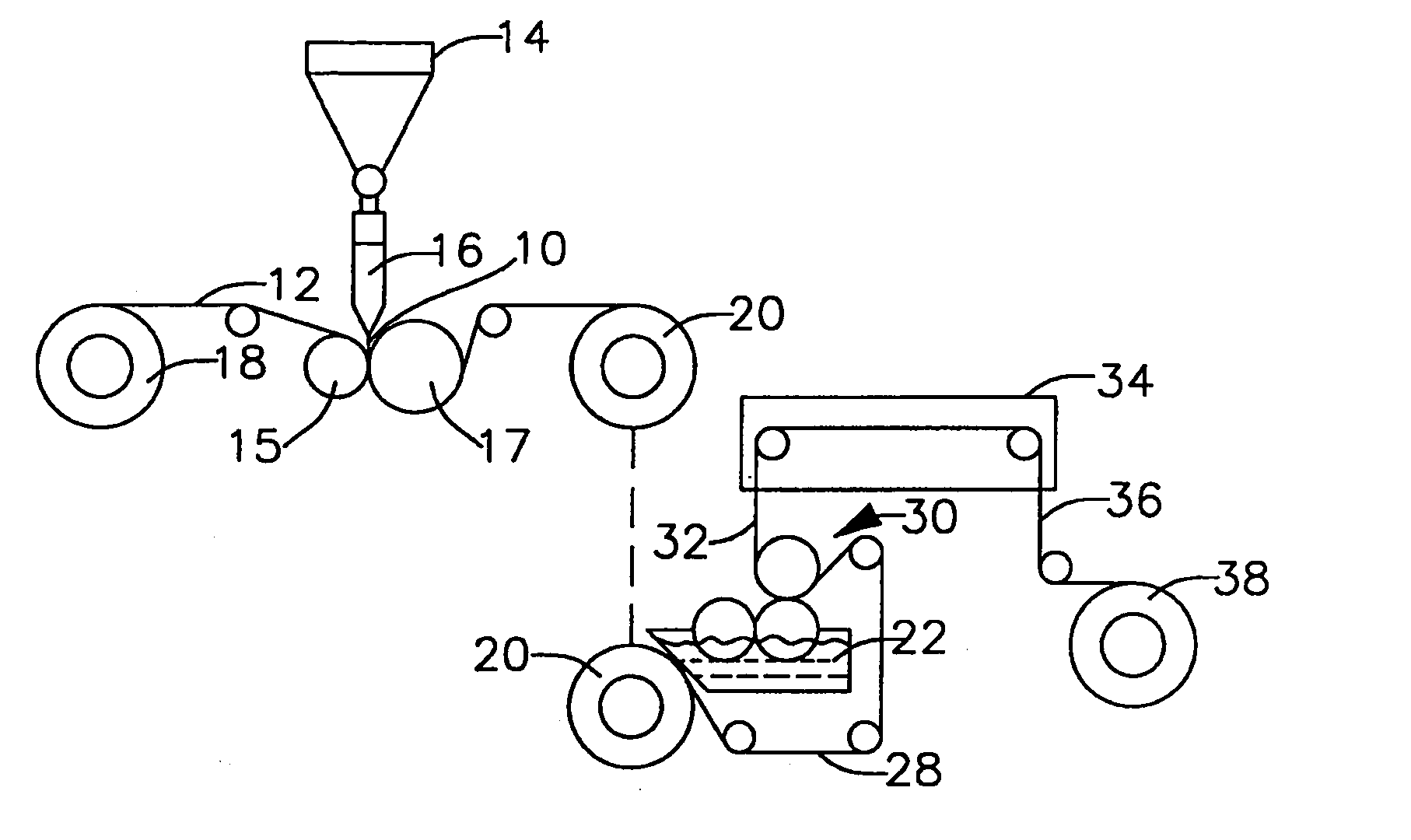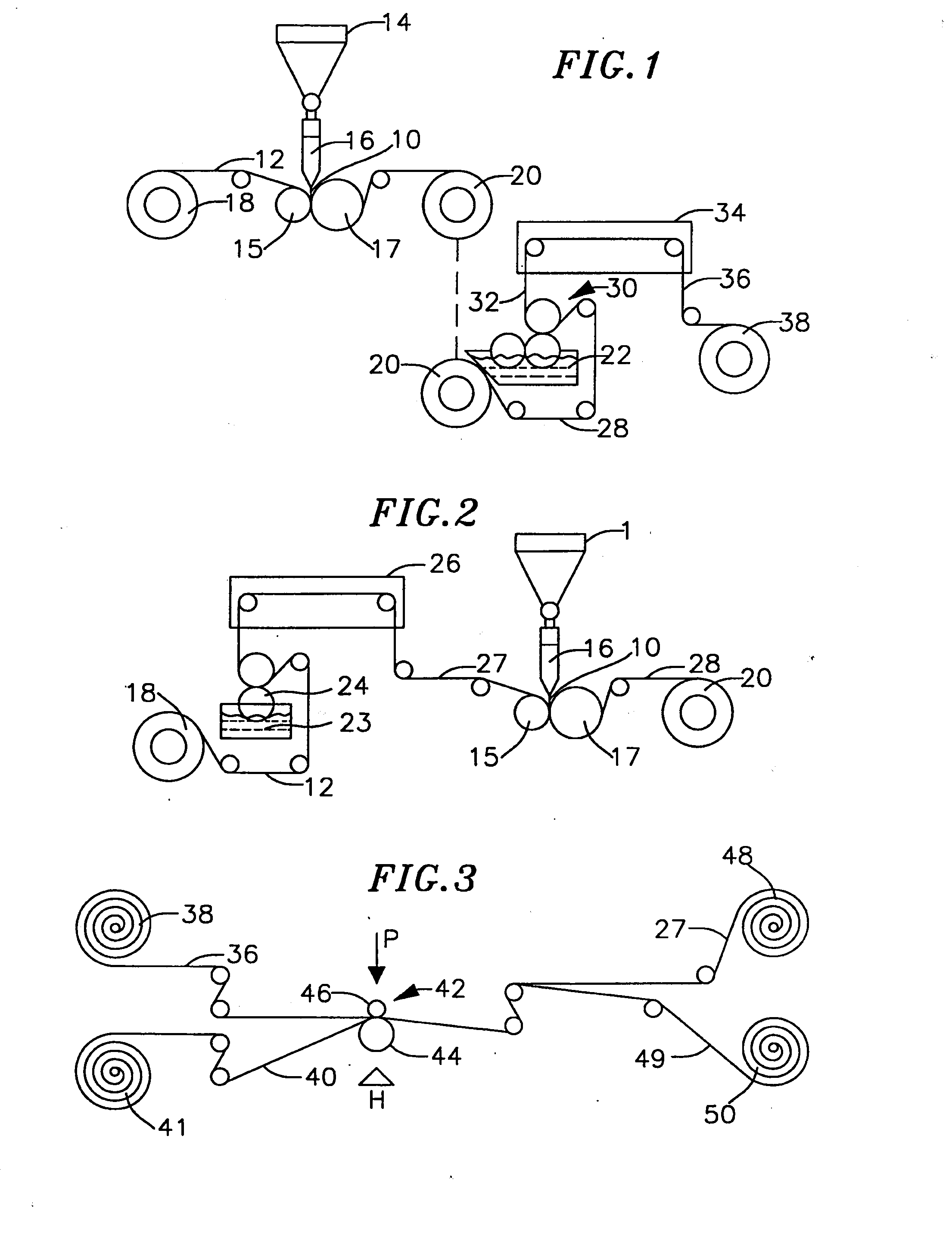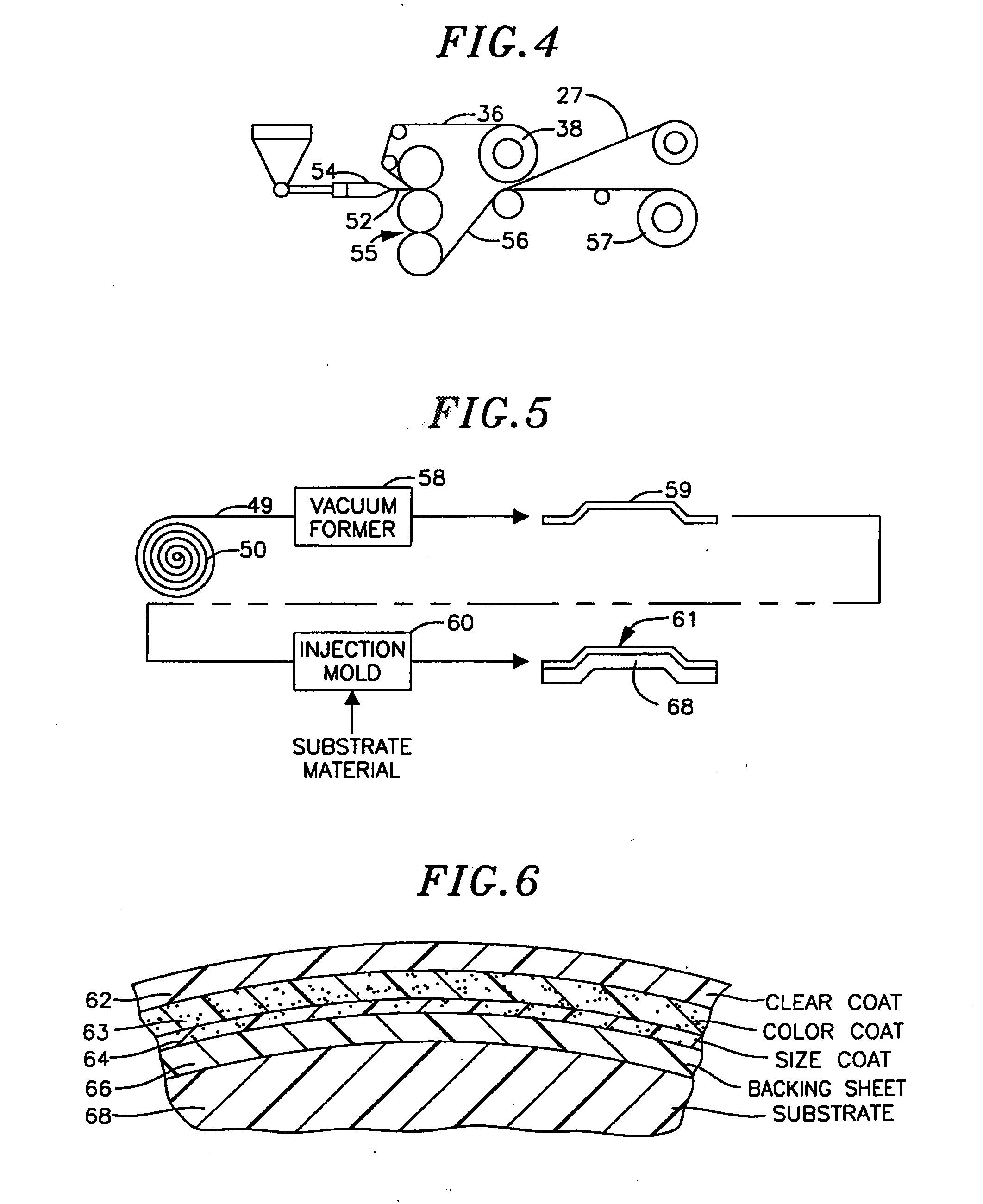Extruded polymeric high transparency films
- Summary
- Abstract
- Description
- Claims
- Application Information
AI Technical Summary
Benefits of technology
Problems solved by technology
Method used
Image
Examples
example 1
[0091]The following formulation of an extrudable clear coat polymeric material was pelletized, and the pellets were fed to an extruder for extrusion coating the resulting clear coat onto the surface of a carrier sheet traveling past the extruder die slot.
INGREDIENTSPARTS1Kynar 72065.0Polyvinylidene fluoride (PVDF)Atochem North America, Inc.2Elvacite 204235.0Polyethyl methacrylate (PEMA)E. I. DuPont (sold to ICI)3Tinuvin 2342.0UV stabilizerHydroxyphenylbenzotriazoleCiba-Geigy* In this and other examples, “Parts” identified for each component are on a parts per weight basis.
[0092]Kynar 720 is the extrusion grade PVDF homopolymer corresponding to Kynar 301F that is commonly used in a solvent cast PVDF / acrylic formulation. Kynar 720 has a melting temperature of about 167° C., a Tg of about −38 to −41° C., and a melt viscosity at 215° C. (measured in Pas·sec at shear rates of 100,500 and 1,000 sec−1) of 1,153, 470 and 312, respectively. (Melt viscosity in the examples herein is measured ...
example 2
[0097]A comparative evaluation was made between the formulation described in Example 1 and the following formulation:
INGREDIENTSPARTS1Kynar 72070.0Polyvinylidene fluoride (PVDF)Elf Atochem North America2VS10030.00Polymethyl methacrylate (PMMA)Atohaas3Cyasorb P 20982.0UV stabilizer(pph)2 hydroxy-4-acrylooxyethoxybenzophenoneCytec* In this and other examples, “Parts” identified for each component are on a parts per weight basis.
[0098]The VS100 is a polymethyl methacrylate (PMMA), known as Plexiglas, which is compatible with PVDF and has a temperature / viscosity profile closely matching the Kynar 720. This formulation was selected for superior extrusion melt strength. The VS100 has a Tg of about 98-99° C., and a melt viscosity (measured in Pas·sec) at 100, 500 and 1,000 sec−1 of 940, 421 and 270, respectively. The formulation of Example 1 wrapped around the gloss chill roll during the extrusion coating process. To prevent this failure a new formulation was developed which would not bind...
example 3
[0105]The following formulation did not exhibit the phase separation problem noted in Example 2. An extrudable clear coat polymeric material was pelletized, and the pellets were fed to an extruder for extrusion coating the resulting clear coat onto the surface of a carrier sheet traveling past the extruder die slot.
INGREDIENTSPARTS1Kynar 72060.0Polyvinylidene fluoride (PVDF)Elf Atochem North America2VS10040.0Polymethyl methacrylate (PMMA)Atohaas3Tinuvin 2342.0UV stabilizer(pph)HydroxyphenylbenzotriazoleCiba-Geigy
[0106]This formulation was selected for superior extrusion melt strength and to reduce phase separation of the Kynar 720 resin. The formulation was compounded using a twin screw extruder (Werner Pfleiderer, model 53MM) to obtain uniformly blended pellets. Extrusion was similar to that described in Example 2, except that the two resins were dried in a dryer at −40° dew pt. and 130° F. for four hours before being extruded into pellets. The screw was maintained at 63 rpm using ...
PUM
| Property | Measurement | Unit |
|---|---|---|
| Length | aaaaa | aaaaa |
| Length | aaaaa | aaaaa |
| Angle | aaaaa | aaaaa |
Abstract
Description
Claims
Application Information
 Login to View More
Login to View More - R&D
- Intellectual Property
- Life Sciences
- Materials
- Tech Scout
- Unparalleled Data Quality
- Higher Quality Content
- 60% Fewer Hallucinations
Browse by: Latest US Patents, China's latest patents, Technical Efficacy Thesaurus, Application Domain, Technology Topic, Popular Technical Reports.
© 2025 PatSnap. All rights reserved.Legal|Privacy policy|Modern Slavery Act Transparency Statement|Sitemap|About US| Contact US: help@patsnap.com



